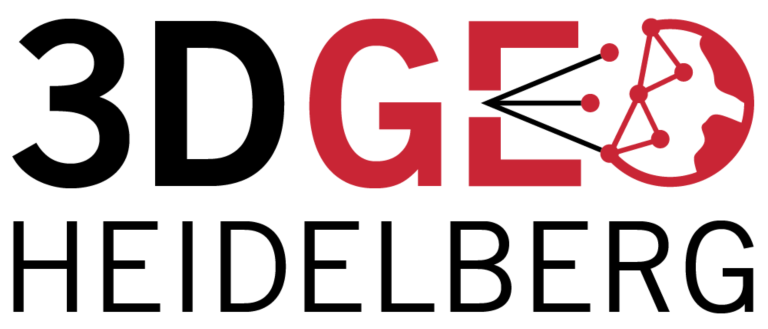Category: Lidar Group
-
Estimating tree height from TanDEM-X data at the northwestern Canadian treeline
A new paper on tree height estimation from TanDEM-X data has just been published in Remote Sensing of Environment. The article finds that tree height can be predicted using TanDEM-X metrics (backscatter, bistatic coherence, and interferometric height) in the sparse forest patches of the Arctic treeline zone at the transition from forest to tundra. Taking…
-
3DGeo at the Geospatial Week 2019
This week, the 3DGeo participated in the ISPRS Geospatial Week 2019 with two presentations among the sessions of the Laser Scanning Workshop with many interesting talks and poster. Presentations were given by Ashutosh Kumar in the Machine Learning Session and Katharina Anders in the Change Detection Session. Highlight: The work by Ashutosh Kumar on feature…
-
Comparison of Three Algorithms for the Evaluation of TanDEM-X Data for Gully Detection in Krumhuk Farm (Namibia)
Namibia is a dry and low populated country highly dependent on agriculture, with many areas experiencing land degradation accelerated by climate change. One of the most obvious and damaging manifestations of these degradation processes are gullies, which lead to great economic losses while accelerating desertification. The development of standardized methods to detect and monitor the…
-
Paper on High-Frequency 3D Geomorphic Observation using Hourly LiDAR Time Series
Can you imagine how much sand is being moved on the beach in the course of a week? Did you ever observe truckloads of sand being transported on the beach in the absence of storms and bulldozers? It is hardly possible to estimate to the naked eye, but can be quantified with permanent terrestrial laser…
-
Paper on Analysis of Feature Relevance in Deep Learning for 3D Point Cloud Classification
A paper investigating the relevance of (pre-calculated) features for 3D point cloud classification using deep learning was just published in the ISPRS Annals of Photogrammetry and Remote Sensing. The study presents a non-end-to-end deep learning classifier for 3D point clouds using multiple sets of input features and compares it with an implementation of the state-of-the-art…
-
SYSSIFOSS project start and first test scans
On May 1st, the SYSSIFOSS project has started and first test scans have already been conducted in the forest. Experciences from these initial testings serve as a basis for many field campaigns this summer which aim at the acquisition of high-density point clouds of 140 single trees with a RIEGL VZ-400 terrestrial laser scanner. Moreover,…
-
First test flights with brand-new UAV-borne LiDAR system
The 3DGeo group is currently testing their new UAV-borne LiDAR (ULS) system. The integrated system consists of a DJI Matrice 600 copter, a RIEGL miniVUX-1 UAV laser scanner and is complemented by an inertial measurement unit and a realtime kinematics GNSS. Combining the different components in one system allows for high-accuracy (cm) acquisition of 3D…
-
PhD Colloquium “Deep Learning in Photogrammetry, Remote Sensing and Geospatial Information Processing”
On 14th and 15th May, our 3DGeo group members Bernhard Höfle and Lukas Winiwarter were co-organizing and participating in the 4th colloquium for PhD students working on the topic of Deep Learning and its applications in Photogrammetry, Remote Sensing and Geoinformation Processing of the Deutsche Geodätische Kommission (DGK) and the Deutsche Gesellschaft für Photogrammetrie und…
-
Usage of HELIOS for various applications
The Heidelberg LiDAR Operations Simulator (HELIOS) is an open source laser scanning simulation framework for interactive simulation and visualization of terrestrial, mobile and airborne laser scanning surveys. It can be flexibly used for teaching and training of laser scanning, development of new scanner hardware and scanning methods, or generation of artificial scan data sets to…
-
Landcover monitoring with emphasis on vegetation under the climatic change pressure using multitemporal and multisource remote sensing data fusion
The new project on landcover monitoring with emphasis on vegetation under the climatic change pressure using multitemporal and multisource remote sensing data is a collaboration project funded in the framework of 4EU+ Flagship 4: Biodiversity and Sustainable Developement with Markéta Potůčková (Department of Applied Geoinformatics and Cartography, Charles University Prague) as PI of the project.…
-
STAP19 Workshop and Compact Course Concluded
From 01-04 April 2019, the 3DGeo and FCGL research groups organized STAP19, a compact course and workshop on Spatial and Temporal Analysis of Geographic Phenomena at the Interdisciplinary Center for Scientific Computing (IWR, Heidelberg University). In a mix of lectures, invited talks and hands-on sessions, the participants learned about processing and analysis of 3D geodata,…


